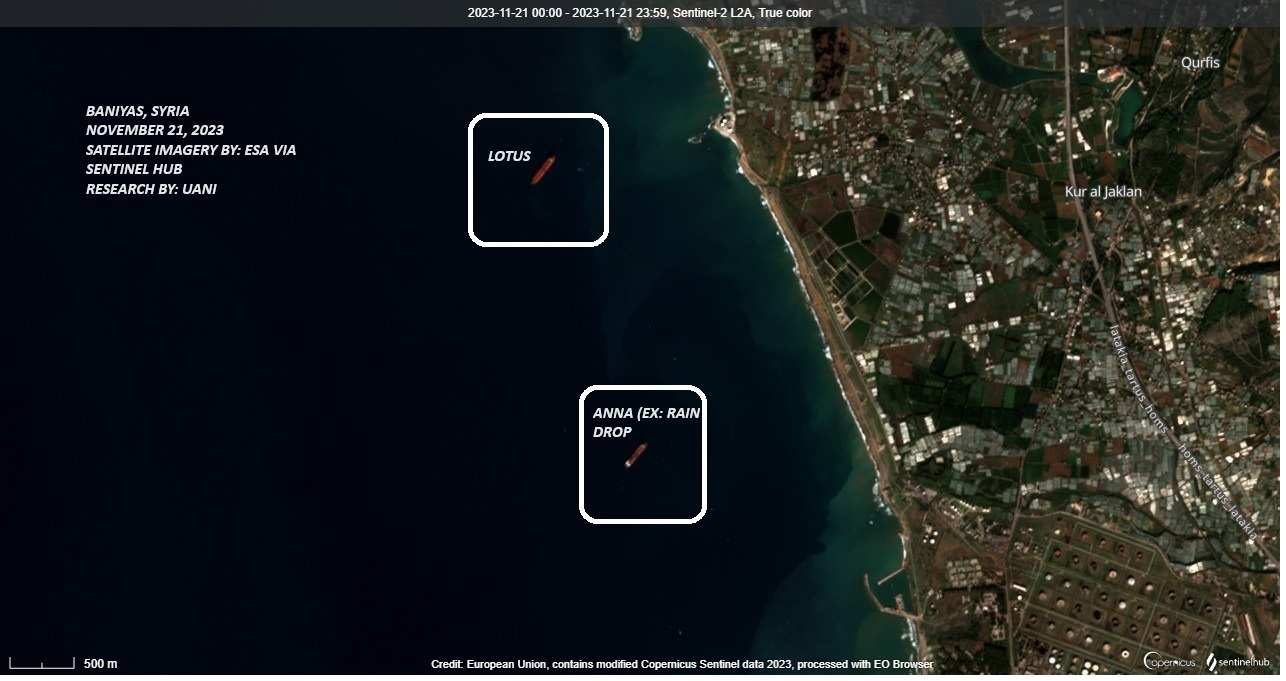November 2023 Tanker Tracker
In the wake of Hamas’ massacre of 1,200 Israelis on October 7, Iran has taken advantage of the ensuing chaos to escalate its policy of maritime aggression. Some of Iran’s and Iranian proxies’ recent bold maneuvers include: the hijacking of and hostage-taking aboard MV Central Park; attacking the Israeli-owned container ship CMA CGM Symi using a bomb-carrying Iranian drone, and; launching missiles at the USS Mason.
Iran’s maritime aggression is often indicative of regional tensions. November was a clear reminder as Iranian Deputy Parliament Speaker Mojtaba Zonnour issued a stark and oft-signaled warning about Persian Gulf shipping safety. IRGC-tied Zonnour warned that Iran is permitted to inspect and potentially halt vessels traversing the Strait of Hormuz, a critical chokepoint for global energy shipments, should they be deemed a threat to Iranian national security. Just as Iran engages in hostage diplomacy, it conducts ship seizures for similar political gains and concessions.
The overall response from the United States has been notably restrained. While deploying considerable U.S. military naval assets, including the Dwight D. Eisenhower aircraft carrier task force, to the Persian Gulf, the understated signaling and unwillingness to engage in kinetic measures appear to have only emboldened Iran. At this moment, U.S. deterrence at sea lacks credibility, just as it does against Iranian land-based proxies firing at U.S. troops in Syria and Iraq. No cessation of Iran’s belligerent actions in strategic waterways appears likely. Iran has continued its provocations with impunity, even ramping up its support to Vladimir Putin against Ukraine.
Iran’s naval operations appear to be a multifaceted strategy aimed at ensuring unimpeded oil flow for its own vital oil exports, deterring adversaries with cost-free aggression, and potentially leveraging its position in anticipation of nuclear deal negotiations.
This month, Iran exported 1.5 million barrels per day. These exports not only fuel Iran’s economy but also underpin its aggressive maritime behavior. The current U.S. administration’s strategy continues to be ineffective – notwithstanding the single UANI-triggered seizure of the Iranian oil on the SUEZ RAJAN, which has recently been sold for $83.5 million – as we witness increased maritime aggression and a relentlessly high stream of Iranian oil exports. This situation underscores the need for a new strategy.
Iran's oil exports for November 2023 are shown below:
|
Country of Destination |
November 2023 - Barrels Per Day (bpd)* |
October 2023 - Barrels Per Day (bpd)* |
September 2023 - Barrels Per Day (bpd)* |
|
China |
1,360,914 |
1,191,272 |
1,127,994 |
|
Syria |
93,558 |
124,485 |
91,379 |
|
UAE |
63,755 |
98,468 |
39,754 |
|
Venezuela |
0 |
0 |
64,445 |
|
Unknown |
106,049 |
49,412 |
109,960 |
|
Total |
1,571,880 |
1,463,637 |
1,443,471 |
* Figures to be updated over the following weeks
Despite the formidable presence of the U.S. Navy in the Mediterranean Sea, a strategic deployment in response to the October 7 Hamas attacks, Iran’s oil exports to Syria have continued unabated as of November 2023. Remarkably, several vessels engaged in this oil transportation from Iran to Syria remain outside the purview of U.S. sanctions. This situation not only underscores the need for the U.S. government to consider sanctioning these specific vessels, but also raises questions about why such action has not been taken already.

For example, on November 21, 2023, LOTUS (IMO: 9203784) was seen offloading Iranian oil in Syria. Despite transporting over 18 million barrels of Iranian oil to Syria since January 2020, LOTUS is not currently sanctioned by the U.S. On the same day, crude oil tanker ROMINA (IMO: 9114608) arrived with Iranian oil loaded from Kharg Island. Since 2020, ROMINA has transported over 10 million barrels of Iranian oil to Syria.
The ongoing trade significantly bolsters the Syrian regime and its allies, highlighting Iran’s adeptness at circumventing sanctions through strategic use of Syrian ports and distribution networks that extend to various regional actors, including Hezbollah. Despite the U.S. Navy’s extensive capabilities, the challenge to suppress this activity is compounded by the high demand driven by Iran’s discounted oil rates.
This scenario prompts – once again – a critical examination of the U.S. government’s current sanctions policy and its implementation. The absence of sanctions on these particular vessels suggests either a strategic oversight or a more complex geopolitical calculus at play. It raises important questions about the effectiveness and direction of U.S. foreign policy in a region where military presence and economic realities are intricately intertwined. The need for a reassessment of this approach is evident, as the current strategy appears insufficient to fully address the nuances of the situation.
Receive Iran News in Your Inbox.
Eye on Iran is a news summary from United Against Nuclear Iran (UANI), a section 501(c)(3) organization. Eye on Iran is available to subscribers on a daily basis or weekly basis.